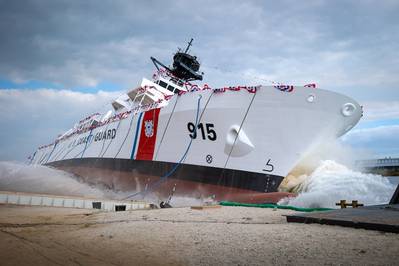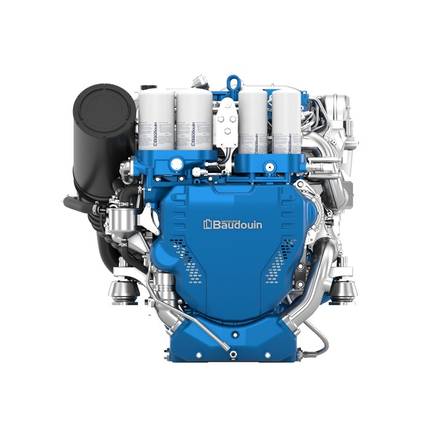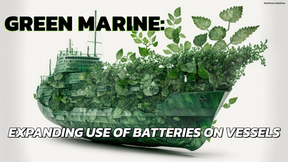US National Maritime Strategy Needs to Empower Tier 2 Shipyards
A few weeks ago, a U.S. Coast Guard cutter spotted several Chinese military ships within the U.S. exclusive economic zone just 200 nautical miles off the shores of Alaska. This incident underscores how brazen our adversaries are becoming in the face of a diminished U.S. maritime presence. China’s brazen actions are backed by the world’s largest naval fleet that they have accumulated over the past several years while our maritime capacity has declined. There is a real threat that China poses to our national and economic security in their growing dominance of international waters.
A comprehensive U.S. maritime strategy accounts for our national security, economic security, and homeland security objectives in both peacetime and conflict. As the potential for conflict in the Pacific looms large, our focus on military production must be at the forefront, while we maintain an aggressive posture on the global trade front in international waters.
Many in Washington are justifiably skeptical of the U.S.’s ability to catch up to China’s investment in their shipbuilding industrial base as China does not operate on a level playing field. I personally refuse to accept this narrative. The bottom line is that the United States cannot afford to let our shipbuilding fall further behind, we are the leader of the free-world, and we must maintain our maritime dominance. I firmly believe that Tier 2 shipyards have the capacity, talent, and infrastructure to augment our Tier 1 shipyards if the proper initiatives are put into place.
Recently, the DOD reported in its Navy shipbuilding plan that, “Within the overall industrial base, including both shipyards and suppliers, varying levels of capacity and risk exist. Nuclear powered ship production, a unique capability with little to no opportunity for commercial or dual use production, is provided by two private shipyards that are currently facilitized and certified to construct nuclear powered ships and will be at capacity for the next 15-plus years…” And while it is critical to have carriers, large combatants and highly sophisticated warships at the lead of forward naval action – recent planning and studies have suggested a littoral, and a heavy troop movement role is the likely scenario in Pacific engagement.
The U.S. Navy relies on seven Tier 1 private shipyards in the U.S. to produce and repair its Fleet. And according to the latest report, two of those yards are at capacity for the next 15-plus years. These yards are the best in the world and standing shoulder to shoulder with them are the midsize Tier 2 shipyards, like Eastern Shipbuilding Group, who are ready to support and carry the additional shipbuilding demands of the U.S. military.
I applaud Sen. Rubio and Rep. Waltz from my home state of Florida for leading the charge, along with a bipartisan, bicameral group of members, on revitalizing our maritime sector. In their newly released Congressional Guidance for a National Maritime Strategy they put forward a framework that includes planning guidance, strategic objectives, and actionable steps for both Congress and the Administration to bolster our nation’s maritime sector. “As China vies for global influence, the United States must project strength and security in the maritime domain,” said Senator Rubio. “Congress must act swiftly to adopt a maritime strategy that invests in our industrial base, reestablishes a strong workforce, and strengthens our national security.”
Tier 2 shipyards, though smaller in scale compared to their Tier 1 counterparts, are vital to bolstering the nation’s sealift capabilities, ensuring resilience, and maintaining a competitive edge in global maritime logistics. These shipyards possess the expertise, flexibility, and innovation needed to complement the efforts of larger shipyards.
By incorporating Tier 2 shipyards into the national sea lift strategy, the United States can achieve several key objectives:
- Tier 2 shipyards can quickly adapt to changing demands, providing surge capacity during times of crisis. Their ability to produce and maintain a diverse range of vessels ensures that the sea lift fleet remains versatile and responsive to various operational requirements.
- Supporting Tier 2 shipyards stimulates local economies, creating jobs and fostering innovation in regions that rely heavily on maritime industries. These shipyards often serve as economic anchors in their communities, driving growth and development.
- Tier 2 shipyards are hubs of innovation, often leading the way in adopting new technologies and practices. Their inclusion in the national maritime strategy ensures that the latest advancements in shipbuilding and maintenance are integrated into the fleet, enhancing efficiency and performance.
To effectively integrate Tier 2 shipyards into the national maritime strategy, several strategic considerations must be addressed:
- Upgrade and expand Tier 2 shipyards. Upgrading and expanding the infrastructure of Tier 2 shipyards is essential. This includes modernizing facilities and investing in advanced manufacturing technologies. These improvements will enable Tier 2 shipyards to meet the demands of a national sea lift strategy effectively, it also provides a strategic wartime multiplier creating production parity with Tier 1 yards for rapid repairs and builds. We have put forward a grant application for a dry dock that would create enormous economic growth for our area and relieve a massive backlog in shipbuilding repair. Before we continue down the road of outsourcing our shipbuilding maintenance jobs to our allies, we should invest in our yards who have the talent and the capacity.
- Implement a national shipbuilding workforce initiative. I have long called for a national workforce initiative aimed at shipbuilders. Although shipyards across the nation are aggressively seeking to recruit and train shipbuilders, we have steep competition across manufacturing sectors for both corporate and skilled trades professionals. This fact makes it hard to maintain and grow our manning level, especially when there is a looming gap in government production. We must train our next generation of mariners and shipbuilders before the current generation ages out of the trade. However, before we are able to train them, they must first be incentivized to choose shipbuilding as their career of choice.
- Reform government contracting processes. Simplifying and expediting contracting processes for Tier 2 shipyards will facilitate their participation in our defense initiatives. Reducing regulatory hurdles and fostering clear communication channels between the government and shipyards will accelerate project timelines and improve efficiency.
- Encourage Tier 1 and Tier 2 shipyard collaboration. Encouraging collaboration between Tier 1 and Tier 2 shipyards can lead to synergies that benefit the entire maritime industrial base. Sharing best practices, resources, and technologies will enhance the capabilities of all shipyards involved, creating a more robust and cohesive sea lift strategy.
- Stabilize funding streams. Long-term, consistent funding is crucial to the success of the national maritime strategy. This financial commitment will provide Tier 2 shipyards with the stability needed to invest in infrastructure, workforce development, and technological advancements.
The need for a national maritime strategy that incorporates Tier 2 shipyards is both urgent and evident. As the United States navigates an increasingly complex global landscape, ensuring that its sea lift capabilities are robust, resilient, and responsive is paramount. Tier 2 shipyards offer the flexibility, innovation, and capacity necessary to strengthen the maritime industrial base and secure the nation’s strategic interests.
By investing in and integrating these vital shipyards, the United States can enhance its sea lift fleet, support local economies, and maintain its competitive edge in global maritime logistics. The time to act is now. As a nation, we must forge a path toward a more secure and prosperous future through a comprehensive and inclusive national sea lift strategy.














